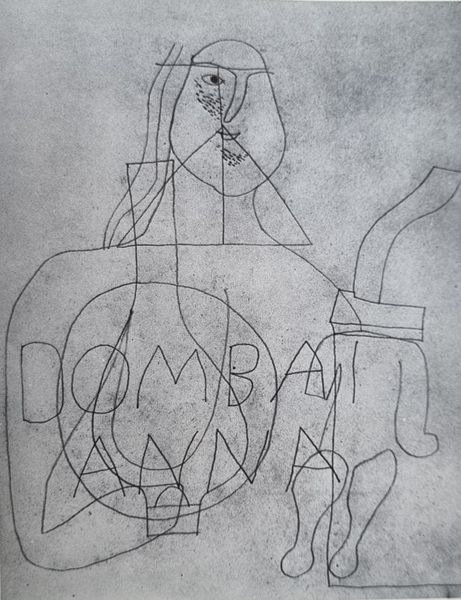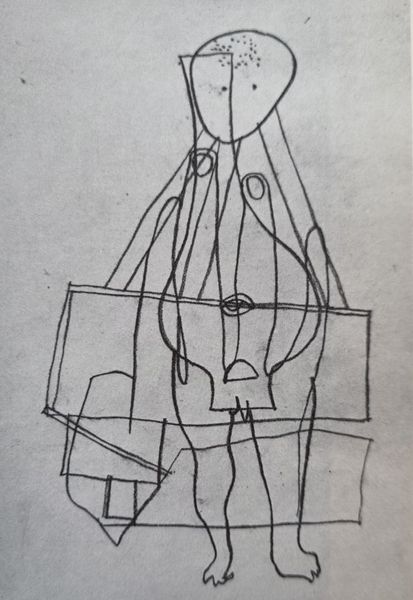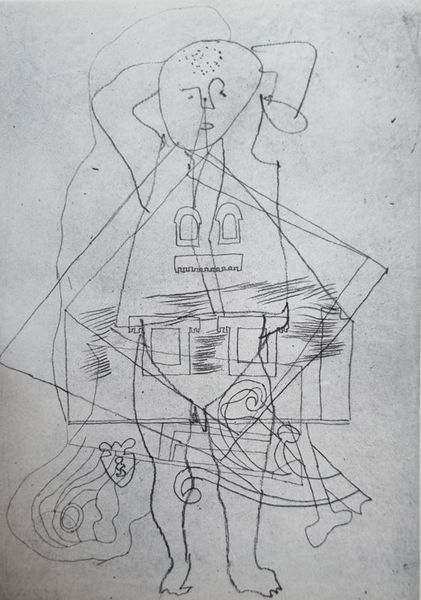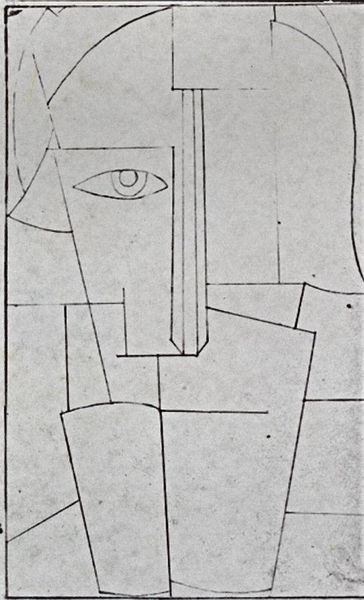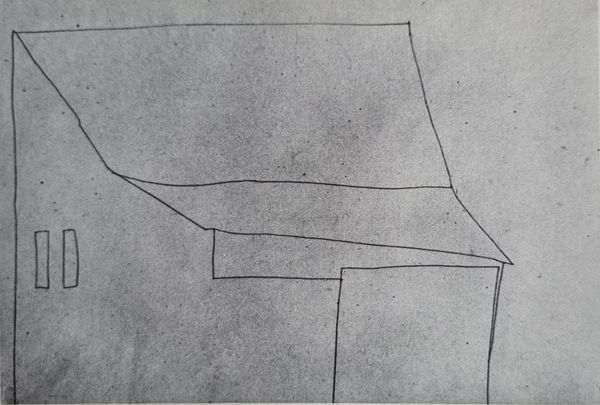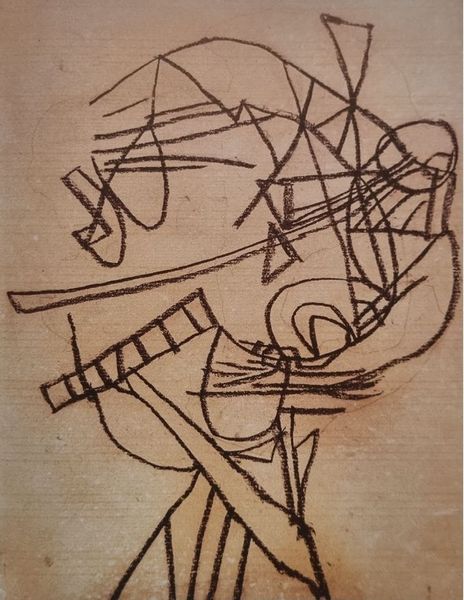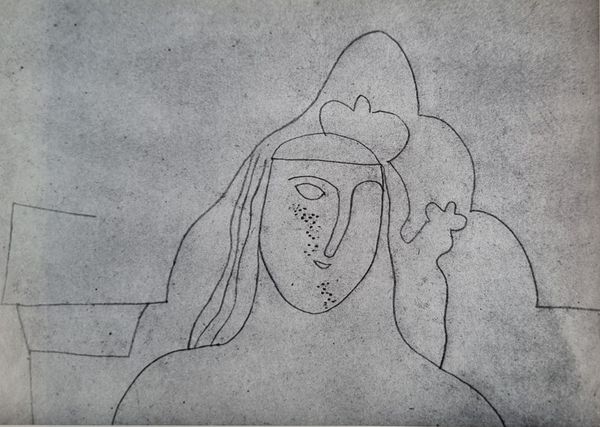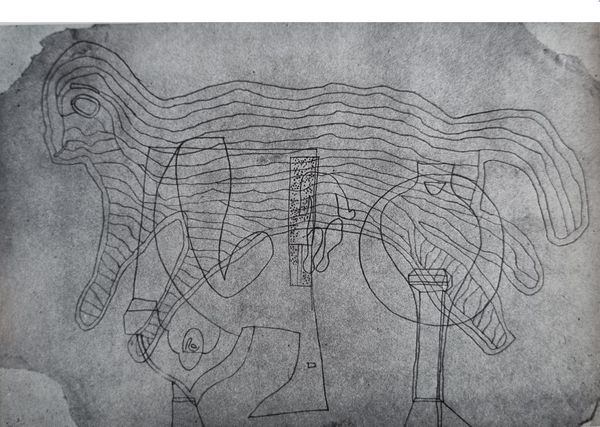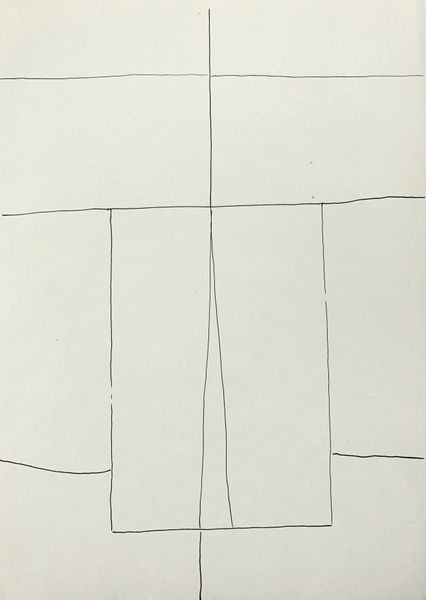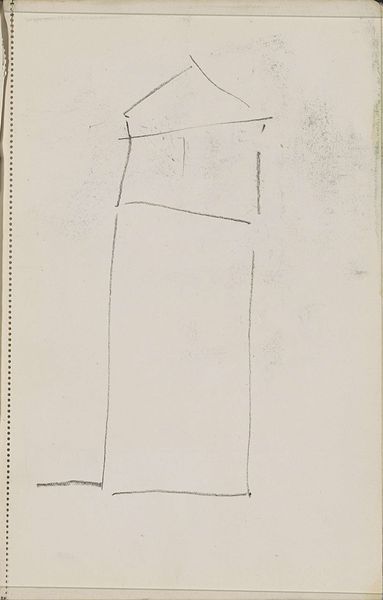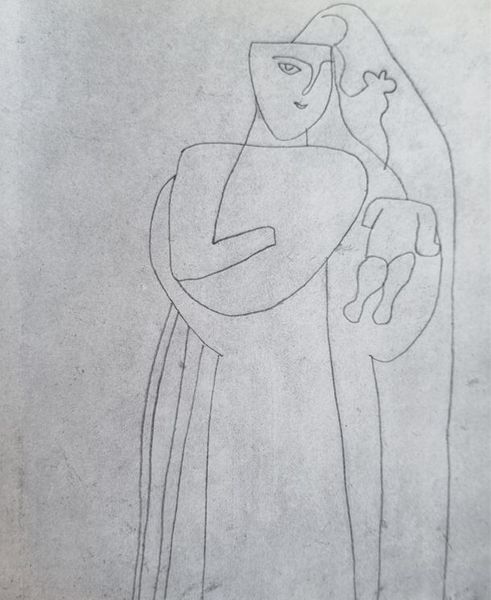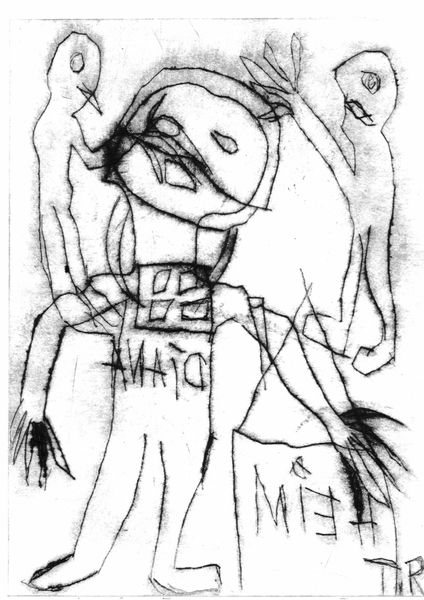
Copyright: Public domain
Curator: Standing before us is "Vásári Síps Huszármotívummal," or "Market Pipes with Hussar Motif," an ink drawing on paper created by Lajos Vajda in 1937. What are your first impressions? Editor: It’s strikingly skeletal, yet contained. There's a sense of vulnerability laid bare, despite the rigid geometric shapes forming what appears to be a figure. The monochromatic palette adds to that feeling. Curator: I find it compelling how Vajda integrates traditional Hungarian Hussar military motifs with those rather abstract shapes, giving us a portrait that simultaneously feels both deeply personal and tied to the larger national identity. Editor: It almost seems like a deconstruction of that identity. Hussars were symbols of Hungarian pride and martial prowess, but here, the motif is simplified, almost fragile, questioning the cultural memory surrounding the heroic narrative of that kind of militant past, while invoking its symbols at the same time. What exactly does it represent for Vajda and the period's Hungarian public role of art? Curator: That’s insightful. Consider the broader context: 1937 was a period of rising fascism in Europe and the threat of war loomed. This work speaks to a feeling of cultural anxiety and perhaps a questioning of traditional values. This blending of identifiable cultural markers with fractured forms echoes the larger anxieties of the time. The paper is heavily worked, creating what you identified, Editor, as this "skeletal" presence and absence within the single representational artistic space. Editor: And it's also that feeling of trying to hold onto a visual image on what seems like very transient material – ink and paper – creating an aesthetic sense of historical urgency and its ephemerality. I think of cultural icons and cultural fragility coexisting on this piece. What will stay, what is inevitably destined to vanish from cultural memory? Curator: Precisely, the technique amplifies the theme. It’s a potent example of how an artist can use simple materials to address profound questions about identity, history, and the human condition in unsettling times. Thank you, this was fascinating. Editor: The pleasure was mine; it’s always stimulating to examine how history resonates even in abstraction.
Comments
No comments
Be the first to comment and join the conversation on the ultimate creative platform.
